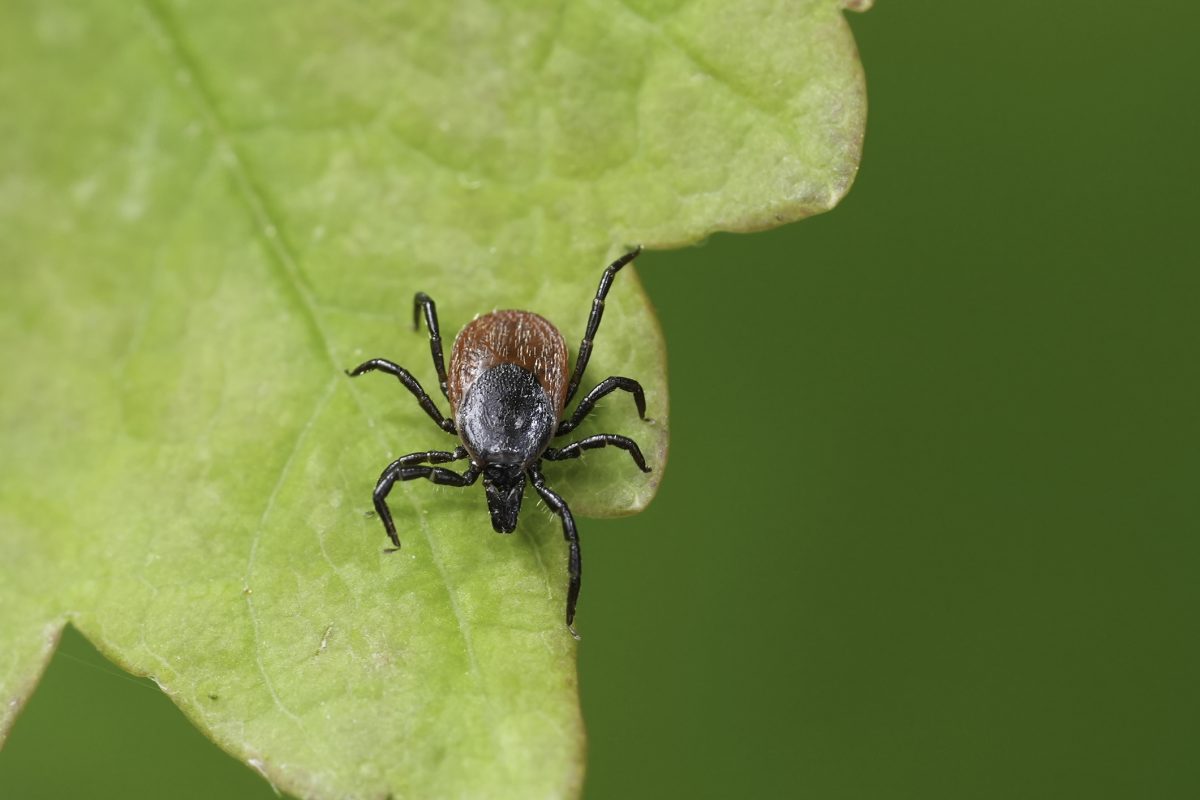I used to think that ticks died out in the winter. Unfortunately, I couldn’t have been more wrong.
From November through February, ticks either go dormant, hide in leftover leaf litter, or stay underground in burrows. And snow doesn’t kill them; instead, it insulates dormant ticks, protecting them through the cold winter months.
So if you plan on spending any time outdoors in the winter, you need to continue to be tick-aware — especially since rates of one tick-borne disease are on the rise….
The concerning rise of babesiosis
Babesiosis, caused by the Babesia parasite, is sometimes referred to as American malaria because, like malaria, it infects the red blood cells and shares many of the same symptoms. Found mainly in Northeastern and Midwestern states in the U.S., babesiosis is transmitted by black-legged ticks, also known as deer ticks — the same ticks that transmit Lyme disease.
Not all people who contract babesiosis have symptoms; those who do experience flu-like symptoms. The disease can be deadly for older adults and those with certain health conditions, such as a weakened immune system or lack of spleen.
According to a new research at Penn State Health Milton S. Hershey Medical Center and Penn State College of Medicine, rates of babesiosis increased an average of 9 percent per year in the U.S. between 2015 and 2022. The majority of cases peaked during the summer months and were reported in the Northeastern U.S.
Researchers suggest changes in factors like temperature, humidity, rainfall and length of season have influenced the population and distribution of ticks as well as the population of animals that serve as hosts. As a result, ticks may be distributed over a wider geographical area.
Does co-infection raise risk of complications?
Researchers say that, of those diagnosed with babesiosis, 42 percent were infected with one or more additional tick-borne diseases, a higher rate than found in previous studies. Roughly 4 out of 10 of those patients were also infected with the bacterium responsible for Lyme disease.
There were no significant differences in complications between the babesiosis-only group and the group with additional tick-borne infections. However, the mortality risk was higher among the babesiosis-only group.
“These findings suggest that clinicians should have a heightened vigilance of co-infection of other tick-borne illness among patients admitted with babesiosis,” says Paddy Ssentongo, infectious disease fellow at Penn State Health Milton S. Hershey Medical Center and lead author of the study.
Ssentongo thought the finding that having both babesiosis and Lyme disease wasn’t associated with worse mortality was surprising. “It’s speculated that the concurrent presence of other tick-borne infections in the blood could alter the immune response by possibly ‘boosting’ it to effectively fight infections,” he says.
The difference in outcomes could also be connected to how other tick-borne illnesses are treated, Ssentongo says. The research team found that the co-infection group was more likely to be prescribed doxycycline, which is the first-line antibiotic treatment for Lyme disease, anaplasmosis and ehrlichiosis, According to Ssentongo, this raises the question of whether doxycycline is also effective in treating the Babesia parasite.
The current treatment regimen for babesiosis depends on how severe the disease is. Treatment typically includes a combination of the antibiotics azithromycin and atovaquone. Severely ill patients also may undergo red blood cell exchange, in which abnormal red blood cells are removed and replaced by healthy ones.
“For patients with babesiosis, we add on doxycycline as we’re investigating whether or not the patient has Lyme disease or other tick-borne diseases, and we’ve seen better outcomes at our medical center with this approach,” Ssentongo says.
He adds that there are reports of other cases of babesiosis that have been successfully treated with doxycycline. However, the researchers say more study is needed to better understand the physiological pathway underlying co-infection and how they might influence treatment protocols.
The best defense is prevention
As Ssentongo emphasizes, the most effective way to treat babesiosis is to not get bitten by a tick in the first place.
Most common infections from tick bites aren’t transmitted immediately. For example, the bacteria that causes Lyme disease takes more than 24 hours to be transmitted.
He advises taking precautions if you live in areas where babesiosis is endemic, especially in the summer months.
“Practice tick-bite prevention practices. Wear long-sleeved shirts and pants and light-colored clothes. Use tick repellant and check for ticks after spending time outdoors.”
If you find a tick, remove it using fine-tipped tweezers to grasp the tick as close to the skin’s surface as possible and pull it upward with steady pressure. If parts of the tick are left in the skin, remove that with tweezers as well and clean the area and your hands with rubbing alcohol. Call your doctor about an examination of the bite.
Sources:
Rates of a tick-borne parasitic disease are on the rise — ScienceDaily
Beyond Human Babesiosis: Prevalence and Association of Babesia Coinfection with Mortality in the United States, 2015–2022: A Retrospective Cohort Study — Open Forum Infectious Diseases
What months are ticks the most active — Terminix
Read full article here




